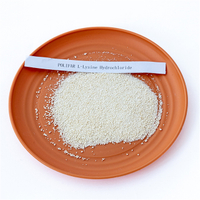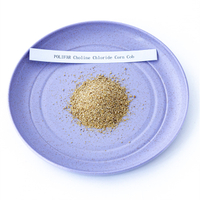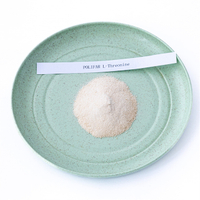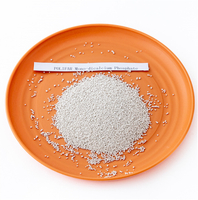Views: 0 Author: Site Editor Publish Time: 2022-11-03 Origin: Site








Feed additives refer to small or trace substances added in the process of feed production, processing and use. They are used in small amounts but have significant effects. Feed additives are the inevitable raw materials used in the modern feed industry. They have obvious effects on strengthening the nutritional value of basic feed, improving animal production performance, ensuring animal health, saving feed costs, and improving the quality of animal products. Commonly used feed additives for cattle mainly include:
Mineral additives, such as calcium, phosphorus, sodium, chlorine, magnesium, etc.
Vitamin additives, such as vitamins A, D, E, niacin, etc.
Trace element additives, such as iron , zinc, copper, manganese, iodine, cobalt, selenium, etc.
Rumen buffer regulators, such as sodium bicarbonate, etc.

Cattle are livestock mainly based on plant-based feed. Dairy cows consume a large amount of minerals through lactation every day, while beef cattle generally use roughage as the main feed for fattening. Therefore, regardless of dairy cows or beef cattle, calcium, phosphorus, sodium, chlorine and other minerals in the diet cannot meet the needs of dairy cows for lactation and beef cattle fattening, and must be supplemented. Commonly supplemented mineral feeds include salt, calcium hydrogen phosphate, stone powder, etc.
Table salt contains sodium and chlorine, and table salt is often used to supplement the deficiency of sodium and chlorine. Sodium plays an important role in maintaining the acid-base balance in the body, maintaining the normal osmotic pressure of body fluids and regulating body fluid volume. The sodium ions excreted in the form of bicarbonate with saliva have an inhibitory effect on the excess acid produced in the rumen, reticulum and ommen of ruminants, creating suitable environmental conditions for rumen microbial activity. Chlorine and sodium synergistically maintain the osmotic pressure of extracellular fluid, participate in the formation of gastric acid, and ensure the pH value necessary for the action of pepsin.
Salt can stimulate the secretion of saliva, promote the digestion of other digestive enzymes, improve the taste of feed, and increase the appetite of animals. Both deficiency and excess of sodium and chlorine can affect the performance and health of dairy and beef cattle. Long-term lack of salt in adult cattle rations can lead to decreased appetite, lack of energy, malnutrition, rough coat, decreased milk production and productivity. Long-term salt deficiency in calf diets manifests as stagnant growth and reduced feed utilization. However, a severe excess of salt can cause increased water intake, diarrhea, and poisoning. Generally, the feeding amount of salt accounts for 0.5% to 1% of the concentrate; the milk production of dairy cows increases, and the salt can be appropriately increased.
Calcium hydrogen phosphate is a common mineral feed additive for supplementing calcium and phosphorus. The feed-grade standard for calcium hydrogen phosphate in China stipulates that the content of phosphorus is not less than 16%, calcium is not less than 21%, and fluorine is not higher than 0.18%.
Stone powder mainly refers to lime powder, which is natural calcium carbonate, and its calcium content is generally 34% to 38%. It is the cheapest and most widely sourced mineral feed additive for calcium supplementation.
Insufficient calcium and phosphorus in adult cattle's diet can lead to osteomalacia or osteoporosis, loss of appetite or waste food, heterophilia, and decreased production performance. Cows have abnormal estrus, repeated infertility, and decreased milk production. Insufficient calcium and phosphorus in the diet of calves can lead to rickets. The initial symptoms of the disease are loss of appetite, lethargy, gradual weight loss, disheveled coat and movement disorder. As the course of the disease progresses, skeletal dysplasia and softening gradually appear, the unossified tissue at the end of the bone becomes thicker, and the spine and sternum are bent and deformed.
For dairy and beef cattle, it is more appropriate to keep calcium levels at 0.9% to 1.2% and phosphorus at 0.5% to 0.7% in different physiological stages.
Vitamins are low-molecular-weight compounds necessary to maintain the normal physiological functions of animals. Once the vitamin is lacking in the feed, the physiological function of the body will be disturbed, and various vitamin deficiencies will appear. So vitamins are essential nutrients to sustain life.
There are many types of vitamins, usually divided into two categories according to their solubility, namely fat-soluble vitamins (vitamin A, vitamin D, vitamin E and vitamin K) and water-soluble vitamins (vitamin B group and vitamin C).
Since bovine rumen microorganisms can synthesize vitamin K and B vitamins, the liver and kidneys can synthesize vitamin C. Therefore, under normal circumstances, there is no need for additional additions except for calves. However, sufficient vitamin A, vitamin D and vitamin E must be provided in the diet to meet the needs of dairy and beef cattle at different physiological periods.

It has also been reported that niacin plays an important role in nutrient metabolism and milk production in dairy cows. Generally, feeding cows with 3-6 grams of niacin per day in the early stage of lactation or before delivery can prevent cows from developing ketosis, and milk production can also be significantly improved. In summer, adding 6 grams of niacin per day to high-producing cows can also increase milk production.
The amount of vitamins added should be determined according to the nutritional requirements of different varieties and different physiological periods. Both vitamin deficiencies and excesses can adversely affect bovine health and performance.
Lack of vitamin A will cause stagnant growth and development of cattle, rough and dull fur, low conception rate, and postpartum uterine inflammation, which will seriously affect production performance. When vitamin D is deficient, calves develop osteomalacia and adult cattle show osteoporosis. The main symptoms of vitamin E deficiency are degeneration of skeletal muscles in calves, resulting in movement disorders and reduced reproductive rates in adult cattle.
Trace elements commonly used as feed additives include iron, copper, manganese, zinc, selenium, iodine, cobalt, etc., which play an irreplaceable role in the body. Iron, copper and cobalt are all indispensable elements for hematopoiesis and play a synergistic role. Manganese is a component of many enzymes involved in the metabolism of sugar, protein and fat, and it is also one of the necessary components for the formation of chondroitin sulfate, which promotes the metabolism of calcium and phosphorus in the body and the formation of bones. Iodine is an essential element for the thyroid to form thyroxine. When iodine is deficient, it is mainly manifested as goiter and reduced metabolic function, stunted growth and development, and loss of fecundity. Zinc is a component of various enzymes in the body and also a component of insulin. Zinc is mainly involved in various metabolic activities in the body through these enzymes and hormones. Selenium is a component of glutathione peroxidase, which can eliminate the toxic effects of lipid peroxides and protect cellular and subcellular membranes from peroxides.
When high-yielding dairy cows ea t more concentrated feed, it is easy to increase the acidity in the rumen, inhibit the activity of rumen microorganisms, cause digestive disorders, decrease milk fat rate and cause some related diseases. To prevent the occurrence of such diseases, the addition of buffers should be considered in the following cases:
① Early lactation
②Concentrates account for more than 50% of the diet
③ Almost all of the roughage is silage
④The rate of milk fat decreased obviously or the appetite of lactating cows decreased in summer, and the intake of dry matter decreased obviously
⑤ When the concentrate and coarse feed are fed separately

There are many types of buffers, generally sodium bicarbonate (baking soda), and sodium carbonate (edible alkali) are also available. However, for high-yielding dairy cows with a daily milk production of more than 30 kg, additional magnesium oxide is added.
The amount of each buffer added is:
1. Sodium bicarbonate: account for 0.7% to 1.5% of dietary dry matter intake, or 1.4% to 3.0% of concentrated feed.
2. Magnesium oxide: accounts for 0.3% to 0.4% of dietary dry matter intake, or 0.6% to 0.8% of concentrated feed.
3. Baking soda and magnesium oxide are better mixed. The mixture of the two accounts for about 0.8% of the concentrated feed for dairy cows (70% of baking soda and 30% of magnesium oxide in the mixture).
The above is the sharing of cattle feed additives, and we hope it will be helpful to all friends in the breeding industry. This article is for reference only, if you want to know more about it, please follow us.






